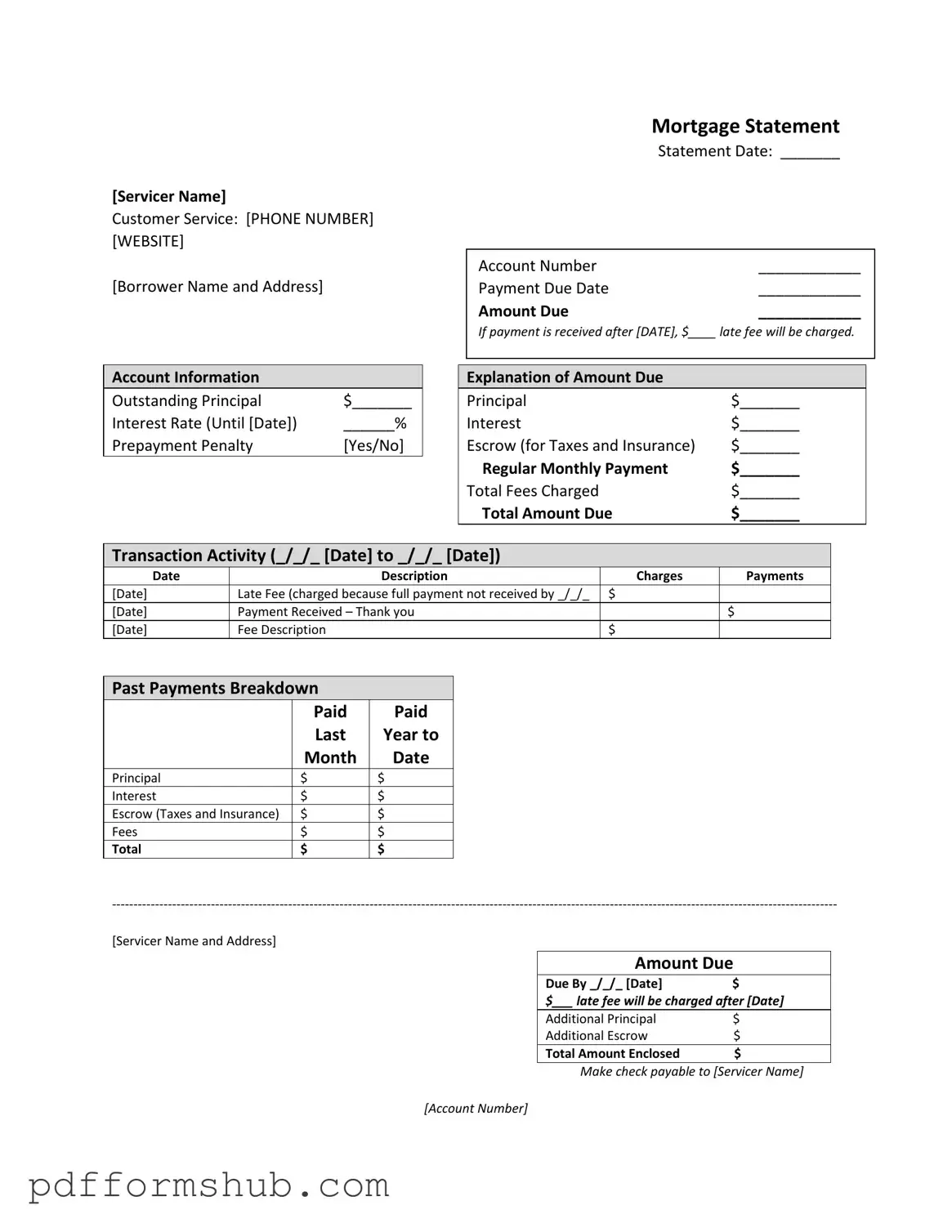The Mortgage Statement form serves as a crucial document for homeowners, providing a detailed overview of their mortgage account. This form is issued by the mortgage servicer and includes essential information such as the servicer's contact details, the borrower's name and address, and the statement date. Key dates are highlighted, including the payment due date and the amount due, which is critical for maintaining the loan in good standing. Homeowners should pay close attention to the outstanding principal, interest rate, and any prepayment penalties that may apply. The statement also breaks down the total amount due into its components: principal, interest, escrow for taxes and insurance, and any fees charged. Additionally, it outlines transaction activity over a specified period, including payments received and any late fees incurred. Important messages within the form alert borrowers about partial payments, delinquency notices, and the potential consequences of late payments, such as fees or foreclosure. For those facing financial difficulties, the statement often provides resources for mortgage counseling or assistance, highlighting the servicer's commitment to helping borrowers navigate challenging times.
